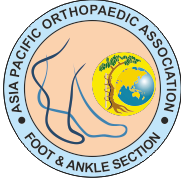Virtual Fellowship 2025
Discussion
Mortons
Definition [edit]
An Interdigital Neuroma, commonly called Morton's Neuroma, is a condition characterized by a thickening and fibrosis of the tissue surrounding a plantar digital nerve in the foot. It is not a true tumor but rather a degenerative change in the nerve due to chronic compression or irritation.
It most frequently occurs in the third intermetatarsal space (between the third and fourth toes), but can also occur in the second space. Symptoms include:
Sharp, shooting, or burning pain in the ball of the foot that may radiate into the toes.
A sensation of having a "pebble" or "marble" under the ball of the foot.
Tingling (paresthesia) or numbness in the affected toes.
Symptoms are often aggravated by wearing tight, narrow, or high-heeled shoes.
Treatment [edit]
Treatment aims to decrease nerve compression and inflammation. Most cases are successfully managed with non-surgical methods.
A. Non-Surgical Treatment:
Footwear Changes: Similar to bunionette, wearing shoes with a wide toe box and avoiding high heels is essential to prevent compression of the forefoot bones and the nerve.
Orthotic Devices and Padding:
Metatarsal pads placed behind the metatarsal heads (proximally) help separate the bones and take pressure off the nerve.
Custom or over-the-counter orthotics can improve foot biomechanics and support the metatarsal arch.
Medication: NSAIDs can reduce pain and local inflammation.
Injections:
Corticosteroid Injections: Used to reduce inflammation and swelling around the nerve, often providing temporary or long-term relief.
Alcohol Sclerosing Injections: A series of alcohol injections can chemically destroy the nerve tissue, which may be an alternative to surgery.
B. Advanced/Minimally Invasive Treatments:
Radiofrequency Ablation (RFA): Uses heat from an electrical current to destroy a small, targeted portion of the nerve, preventing it from transmitting pain signals.
Cryotherapy/Cryoablation: Uses extreme cold to destroy the nerve tissue.
C. Surgical Treatment: Surgery is an option when conservative and minimally invasive treatments fail to relieve persistent, severe symptoms.
Neurectomy: This is the most common procedure, involving the surgical removal of the damaged, thickened portion of the nerve. A potential side effect is permanent numbness in the toes served by that nerve.
Decompression Surgery: Involves cutting the surrounding tight tissues (like the deep transverse metatarsal ligament) to relieve pressure on the nerve without removing it.

